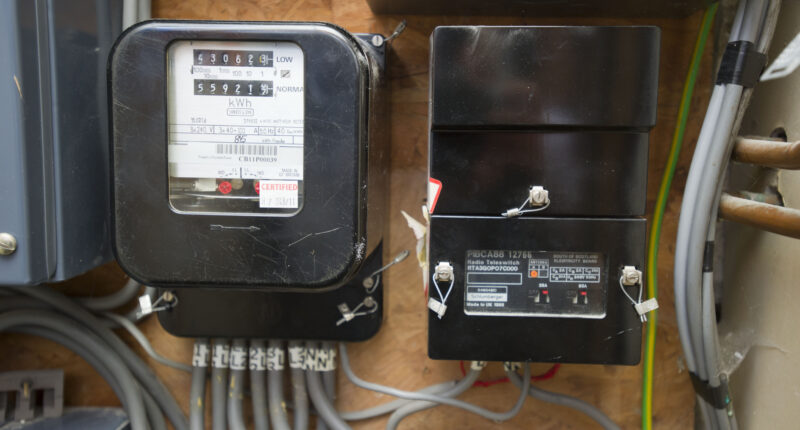OVER 820,000 households could see their energy bills climb if they don’t take action before an electricity meter switch off.
Customers at some of the UK’s biggest energy suppliers are still relying on these legacy devices, according to new data by Elexon.
Electricity meters that rely on the Radio Teleswicth Service (RTS) will stop functioning after March 31, 2024.
Hundreds of thousands of customers on Economy 7 and other multi-rate energy tariffs use these electricity meters, which charge customers cheaper rates depending on the time of day.
The devices rely on the Radio Teleswitch Service (RTS) which broadcasts a signal alongside the long-wave channel for BBC Radio 4.
This signal is then picked up by the meter and used to switch the electricity rates at different times of the day.


Some RTS electricity meters can also automatically turn heating and hot water systems on and off during certain hours.
However, the RTS signal will be switched off on March 31, 2024 and these meters will no longer function as intended.
From April next year, these meters could be left jammed on peak time electricity rates depending on when the RTS signal dies.
This could lead to huge bill hikes for households affected by the switch off.
Most read in Money
It could also leave those with heating systems controlled by RTS on or off permanently.
The number of customers still using RTS-controlled meters varies by firm.
But new data from Elexon, the company responsible for managing the electricity balancing and settlement system shows which firms have the most customers with the legacy device.
Over 100,000 customers at Eon Next, Octopus Energy (including Bulb) and Scottish Power still rely on RTS meters.
A further 50,000 customers at British Gas, EDF and Ovo Energy (including Boost and SSE) still rely on RTS meters.
The only way to avoid facing the issues expected to arise from the RTS switch off is for affected households to switch to a smart meter.
Customers that do so will still get access to muti-rate energy tariffs including Economy 7.
An Ofgem spokesperson said: “Suppliers have to make sure meters are safe and accurate, and this sometimes means replacing the meter. We expect suppliers to communicate clearly to their customers about this.”
However, if you don’t hear from your energy supplier, Energy UK recommends that customers get in touch to enquire about having one fitted.
The RTS was originally meant to be shut off back in 2014, but energy suppliers have been keeping the service on life support as they act to move their customers over to new meters.
With less than a year to go, Ofgem said in a letter to suppliers in April that it was still disappointed at the lack of progress in ensuring that these customers’ meters are exchanged for smart variants
Energy UK told The Sun, that while the switch off is still scheduled for March 2024, discussions with providers are already underway to extend the service into 2025.
How do I know if I have an RTS electricity meter?
You’ll be able to tell if you have a meter that relies on the RTS quite easily.
The oldest RTS-powered meters have a switch box labelled “Radio Teleswitch” located next to the physical electricity meter.
Others may the RTS switch box included within the electricity meter as a single box on the wall.
If you’re unsure about the type of electricity meter in your home – call your supplier as they’ll usually have this information on hand.
What are the benefits of installing a smart meter?
It doesn’t cost you anything to have a smart meter installed – your energy supplier will do it for free.
The same rule goes for all customers affected by the RTS switch off.
Smart meters are designed so that you no longer need to send energy suppliers traditional meter readings once you’ve got one.
You will no longer have to give meter readings and you won’t be visited by a meter reader to record your usage.
This makes your bill more accurate too, as it’s based on readings from actual usage, rather than estimates.
The devices also let you track how much energy you use at night, during the day and at peak times.
An in-home display is also usually provided which connects to the meter and shows your energy usage and the cost in pounds and pence.
You can save money on your energy bills using a smart meter.


It won’t save you money just by having one. But being able to see your energy usage and the cost could help you understand where you can cut back.
Customers with RTS electricity meters that switch to a smart meter can still get access to flexible electricity tariffs if they opt for one.











